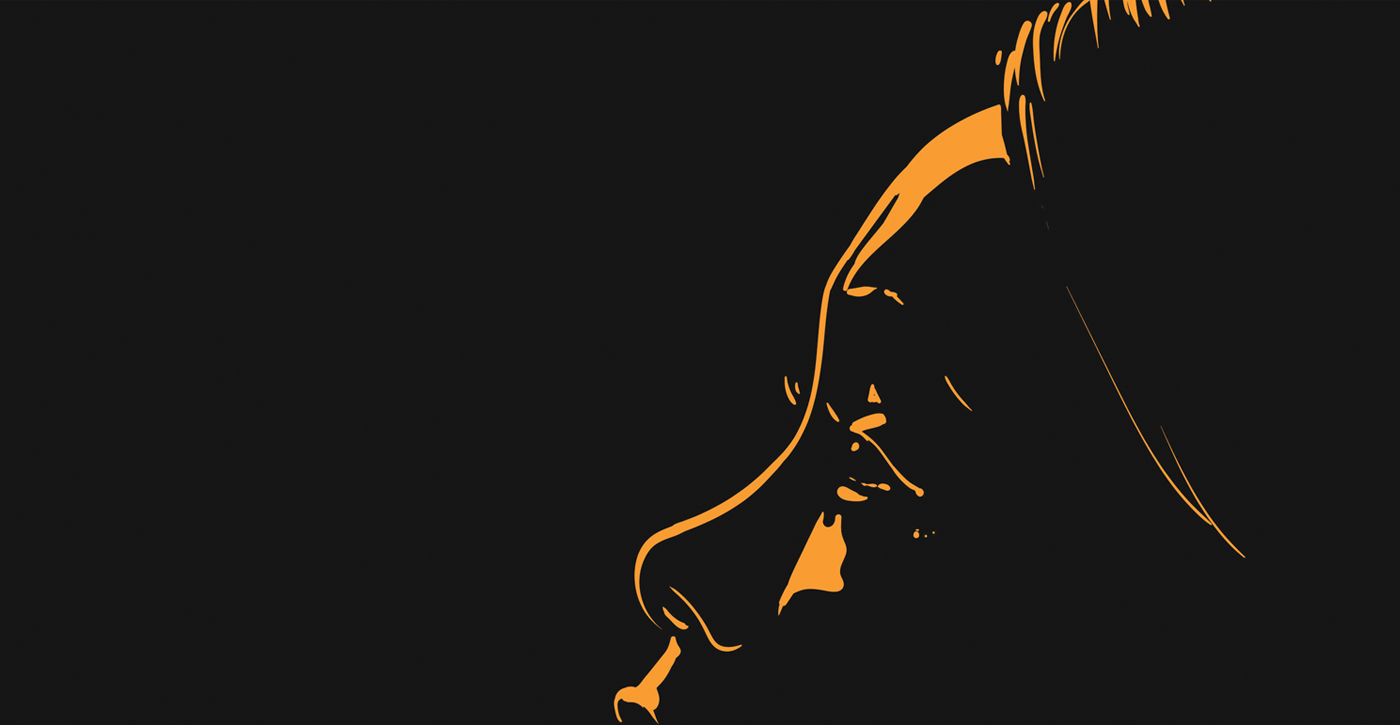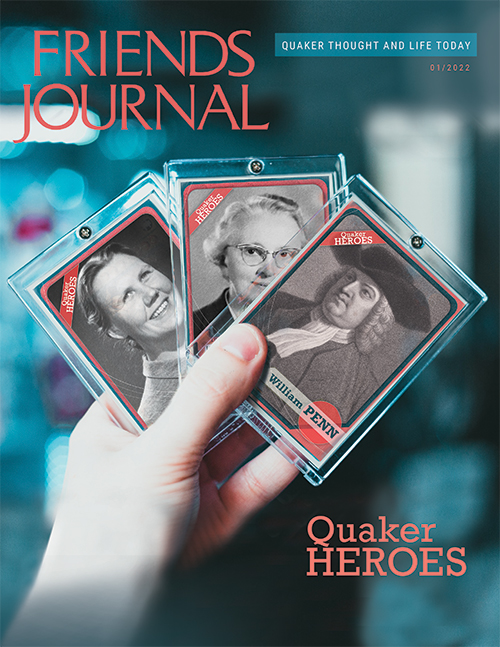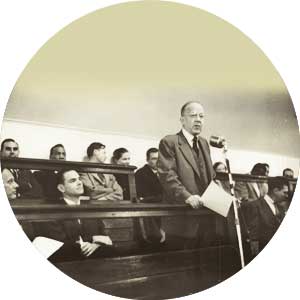The Fellowship of Early American Black Quakers
This portrait of Quaker courage tries to illuminate how American Quaker thought, practice, and community have been altered by the long-standing presence and contributions of Black people. The eighteenth- and nineteenth-century lives, writings, and legacies of Friends like William Boen, Cyrus Bustill, Paul Cuffe, Grace Bustill Douglass, and Sarah Mapps Douglass assert an enduring tradition of Black religious expression within and alongside the Religious Society of Friends. My sketch, however, is not about any one particular Friend but of the meetinghouses full of people in the early histories of Quakerism who we do not know—and are unlikely to ever really recover. Still, there are singular Friends to whom we might look to help us better hear and recognize how enslaved African and free Black people continually challenged White Quakers to inhabit and manifest their religious ideals.
One of these Friends worshiped near Carteret County, North Carolina. By the time French Quaker Stephen Grellet arrived there in 1825, most of the local Friends had moved westward to Ohio. In the Memoir of the Life and Gospel Labours of Stephen Grellet (1862), Grellet mentions the abandoned meetinghouses and the families that stayed behind. A few White families remained, in part to offer some social protections to free Black families that worked and lived among Friends. One can question if the Black families had elected to stay or had they been simply left behind by their former enslavers who had moved west:
By water, again, we went up to Core Sound Monthly Meeting. Only about twenty families of Friends remain in that part of the country, where formerly they were numerous. In the year 1800, many removed in a body to the State of Ohio. Strong inducements for their leaving, were the unhealthiness of the district, and slavery. . . . I felt tenderly for the few members of our Society who continue in this corner. Some of them think it is their religious duty to remain, to protect many of the people of colour, who formerly belonged to those Friends who have moved away, and who, unprotected by them, might be reduced again to slavery, I heard very interesting accounts of the conduct of some of these people, and of their sobriety and industry.
At least one meetinghouse was repaired and maintained by a Black family. Another, as Grellet reveals, was still active:
Near another forsaken meeting house (there are several thus left by the removal of Friends), resides an aged black woman, who used to attend meetings there with the family. She continues to come to the house twice a week, regularly, on First and Fourth-days, and sits alone in silence to wait upon and worship that God and Saviour whom she has been instructed to know and to love. I felt great interest and satisfaction in my visit there.
This is a portrait of Black Quaker practice held out as a model to Friends. An unnamed woman, worshiping alone in an otherwise abandoned meetinghouse makes clearer the tradition I am trying to invoke. Dwelling in stillness, her Quakerness exists outside of White Quaker authority, placing fellowship above membership. “Fellowship,” as I mean it, reaches toward the complex religious intimacy—the accretive and unifying impulses of spirited stillness that ensures Quaker silence is not Quaker solitude, in which Quakers join themselves to one another and the Divine in worship. While no Friends join her in body, Quaker worship takes up silence as an invocation to the Divine; her stillness is embodied, yet transcended: a quiet waiting upon the presence of awe, of the sublime, of God.
Her presence, however brief in the literature, is a part of Quaker history, as are the forms of oppressive silencing that produced her archival namelessness. Her quiet is vibrant and underscores the radical possibility of the inspired Black voice. Her worship, however isolated by history and time, points stalwartly to the fact that even as White Quakers debated, resisted, or obstructed Black Quaker membership, the spirit of Quaker worship (mobilized through the Inner Light) moved against these barriers. In this way, her stillness unsettles Quaker orthodoxy, as it models a practice of Quaker worship that is not bound by the limitations of official membership within the Society of Friends.
Her worship also sets into high relief the ways groups of White Friends had, as we learn, quite literally left Black Friends behind, and reveals to us the elided tradition of Black stillness within the Atlantic Quaker tradition. One of the many tragedies that shape Quaker history is that we will never be able to satisfactorily quantify Black participation and engagement in the early history of the Religious Society of Friends. Reasons for this include but are not limited to the myriad violence of slavery that broke-up families and reduced Black people to fungible commodities, the formation of Quaker historiography and archives that did not actively seek to retain their voices, and the failures of early Quaker communities to welcome sustained fellowship with Black attendees.
The often courageous antislavery legacy of Quakerism—along with its simultaneously myopic and glacially slow momentum—is well-established. In the seventeenth century, slaveholding Friends in Barbados and Pennsylvania made promoting the moral and spiritual well-being of the Black people they enslaved a part of Quakerism’s public image. In the eighteenth century, visionary Friends labored to extract slavery from the body of the Society: economically, domestically, and spiritually, clearing narrow pathways for the Quaker abolitionists who came out of the Religious Society of Friends in the nineteenth century. Still, even as they passionately labored to resist American slavery in the eighteenth and nineteenth centuries, White Quakers actively resisted the formal membership of Black worshipers and Friends who wished to join their communities. There are exceptions to this, of course, but Quaker gatekeeping makes category labels like “membership” weak indexes of Black participation and engagement in the early history of the Religious Society of Friends. One way I have suggested we might think around this historical barrier is by paying attention to Black worship in Quaker meetings, especially where membership has been denied and withheld. The unnamed woman in North Carolina opens space to articulate a tradition of Black stillness. The fact is that Black people have been present at Quaker meetings since the mid-seventeenth century.
The journals and correspondence of itinerant Friends in the early Quaker movement have left us with a smattering of references—mostly fleeting—to meetings where Black people were present. These references exist especially where Quakers lived as enslavers. Before Philadelphia, there was significant Quaker influence in the Caribbean. We know that by the time Mary Fisher and Ann Austin arrived in Barbados in 1655—staying for six months before their infamous arrival in Boston Harbor—African and Native slavery were the established backbones of the plantation economy. In the wake of these early Quaker visitors, some of the plantation-owning enslavers of the Caribbean soon became Quaker, deepening the Society’s investment in the Atlantic slave economy. And still, the beginnings of the Quaker path toward antislavery and abolitionism are on the islands of Barbados, Nevis, and Jamaica, as traveling Friends like Alice Curwen and William Edmundson were unsettled by their first encounters with Quaker enslavers.
By 1676, Quakers on Barbados were routinely bringing the people they enslaved to meetings for worship, which did not sit well with the island’s other plantation owners. In 1676—independent of laws passed in Barbados to stop Quakers from bringing Black people to their religious services—the meeting for worship of a group of Quakers on Nevis was interrupted by military officers and a constable. Among the worshipers was a Black man called Toney, whom the authorities “put in Irons, and much abused.” The gathered Friends were ostensibly arrested for their previous refusal to bear arms and serve on the island’s regular watch guard. Toney is swept up in, and becomes an accomplice to, these Quaker crimes. There are other recorded incidents where groups of unnamed, enslaved people are arrested with Quakers. In 1677, a meeting held on Nevis in the home of John Carpenter—a Quaker enslaver—was interrupted by officers who then arrested the “several” enslaved people that were present; the group was held in irons for “three days and two nights.”
Our main source of information about laws against Friends and their subsequent enforcement in the Caribbean comes from Joseph Besse’s A Collection of the Sufferings of the People Called Quakers (1753). Besse’s two volumes are a catalog of fines, punishments, and violence that resulted from Friends defending their religious principles. The fact that the presence of Black attendants at Quaker meeting for worship is recorded in a significant book of suffering gives us critical space to read restoratively, to widen our sense of whose sufferings are being attended to, and move toward justice through an open reading practice. Whether they were invited, coerced, forced, or chose to attend, the enslaved people who came to these meetings suffered as a consequence of their participation. Quaker history, nearly from its inception, is also a container of Black history; as such, Quaker suffering, I argue, eludes the nominal subject and extends to the enslaved, who suffered and whose moment of stillness was also violently interrupted.
The journals of itinerant White Friends who traveled across the uniting colonies of America attest to the increase in Black participation in worship during the late eighteenth and early nineteenth centuries. Their records matter because the relationship between Quakerism and Black religious expression is often limited to a relatively small group of better-known Black Friends; this misses the many ways Black people attended and shaped early Quaker worship spaces. For example, William Williams recounts in his journal (1828) how he traveled through Chester, Pennsylvania, in March of 1818, as part of a religious mission to visit Friends in the region. Williams observes:
Fourth-day.—Rode forty miles to Chester, and had a meeting there next day. I thought more people of colour attended this meeting, than I had ever saw at a meeting before, except one appointed for them. The Lord was with me, and enabled me to address, both blacks and whites, professors and non-professors, and I think the meeting was as much tendered as any that I have ever was in; the Lord’s presence was felt, and his power was over all, and this subdued all other powers before it.
In Quaker literature, there are similar accounts of Black attendance at meetings in Maryland; Massachusetts; New York; North Carolina; Rhode Island; South Carolina; and Virginia, among others. As Williams indicates, Friends often appointed meetings specifically for Black people. The first regularly appointed meeting for Black worshipers known to us was organized by Philadelphia Friends in 1756 and met quarterly at the Bank Meetinghouse until 1805. In his journal, the itinerant Quaker Joshua Evans describes a meeting he organized in 1797 at the recommendation of a local man in Banister, Virginia:
A black man proposing my having a meeting with the black people; after weighing it, I was easy to have notice spread for one to be held that afternoon; which was accordingly, and a large number of blacks with some white people came together. It proved to be a favoured time to these poor creatures, and I could say I was thankful that my way opened to be among these people, both black and white.
When Evans says that “my way opened,” he suggests that both he and the man who requested this meeting acted in accordance with divine direction. Evans offers at least ten, similarly brief recollections of gatherings from the late 1790s that either he helped organize among Black communities, or were established Quaker meetings he visited where a notable portion of the gathered attendees were Black.
Martha Winter Routh records another dozen such meetings in her Memoir of the Life, Travels, and Religious Experience of Martha Routh (1822), including one in Charleston, South Carolina, where, after standing to speak out of the silence, she was interrupted by a White man (allegedly the mayor) who grew anxious that her message would agitate its Black hearers. She quietly rebuked him and carefully proceeded but reflects later that the incident left her “afresh sensible of the little openness in these southern states, to plead the cause of the oppressed: and therefore but little room for the spirit of Christianity to spread.” Friends on Long Island (New York), and in New Jersey, Pennsylvania, and North Carolina established semi-regular (monthly or quarterly) meetings especially appointed for Black people.
Even when the Religious Society of Friends as a body was reliant on the systemic enslavement of African and African American people, the presence of Black people at these early meetings reminds us that the Inner Light cannot be circumscribed nor delimited by race. This paradox plays out through the nineteenth century, as Black attendants who were Friends in all but membership made Quaker religious practice meaningful for themselves, even as White Friends continued segregating their meetings.
Black lives and stories matter to our understanding of the history of Atlantic Quakerism and the Religious Society of Friends as an organizational body. This claim is supported by a modest but rich body of historical scholarship. The influential writer W. E. B. Du Bois, for example, and the groundbreaking Quaker historian Henry J. Cadbury made vital contributions in the 1930s to our understanding of the complex relationships between Black people and the Society of Friends. More recently, the ongoing efforts of historians of Quakerism like Stephen W. Angell, Margaret Hope Bacon, Brycchan Carey, Kenneth Ives, Emma J. Lapsansky-Werner, Vanessa D. Julye, Paul Kriese, Donna McDaniel, and Harold D. Weaver Jr., among so many others, have sustained and grown our awareness of this history. Historians of slavery, abolition, and Christianity who follow their questions into Quaker archives (as have Kristen Block, Katharine Gerbner, Manisha Sinha, and Nicholas P. Wood) continue to offer new insights into the history of conflict and collaboration between Black people and Quakerism.
The unnamed woman in Grellet’s account—like Sarah Mapps Douglass and William Boen—elucidates the incidental, forced, and sometimes religiously transcendent relationships between Quakerism and Black people in America, which include the ways Black Friends turned and challenged White members to come into higher levels of religious consciousness concerning race, prejudice, and Quaker discipline. Quakerism and the Religious Society of Friends as an organizational body have been humbled by the contributions and nourished by the presence of Black worshipers.





Comments on Friendsjournal.org may be used in the Forum of the print magazine and may be edited for length and clarity.